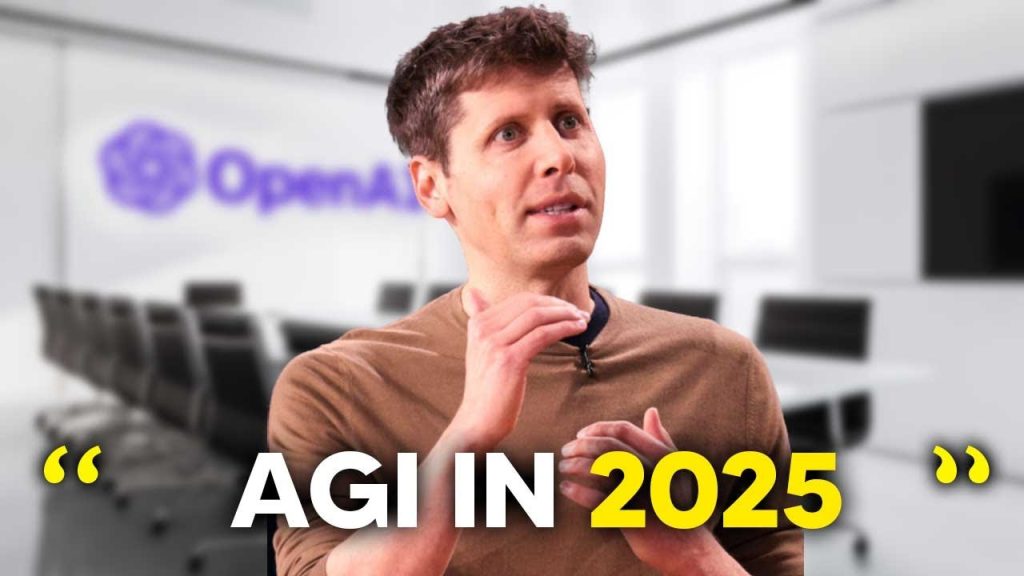2025 The Year of Artificial General Intelligence

Hold onto your seats as we dive into the wild prediction for 2025, Artificial General Intelligence (AGI) may just become a reality. This forecast has sparked debates, excitement, and a fair share of skepticism.
With industry giants and insiders weighing in, there’s much to explore about this futuristic vision. Will 2025 mark the dawn of a new era in AI, or are we caught in a whirlwind of hype? Let’s delve deeper into the implications and insights.
The Bold Prediction
In a surprising statement, a prominent figure in the AI sector suggested that AGI might arrive by 2025. This remark, coming from someone at the forefront of AI development, has stirred the pot, causing both excitement and doubt among experts and onlookers alike.
The anticipation surrounding AGI is immense, given its potential to revolutionize industries and everyday life. However, skepticism is present, as some believe such predictions may be driven by a desire to generate buzz around AI advancement.
Several insiders from the company have supported the claim that AGI in 2025 is not merely hype. They assert that the prediction aligns with ongoing progress and median views within the organization, lending credibility to the bold statement.
Voices from Within the Industry
High-profile AI experts have joined the conversation, echoing the sentiment that the 2025 prediction is plausible, not fanciful.
These insiders insist that the company’s pace is so rapid that many outside observers struggle to grasp its speed. They argue that the statement reflects transparency and confidence in the direction AI research is heading.
Reflecting on this, one can see how internal support from researchers adds weight to the projection, suggesting it is more grounded than merely an ambitious shot in the dark.
Significance of the 2025 Timeline
Among the details that caught attention was the mention of 2025 as a target year for AGI. This specific date didn’t just emerge randomly but seemed to be a meaningful marker for those in the know.
Social media has been abuzz, with certain users hinting at insider knowledge. Their cryptic references to 2025 suggest they may have had a preview of the innovations expected in the AI space.
Though speculative, these hints contribute to the overall narrative, suggesting that the AI timeline might be more structured and strategic than publicly known.
Other Perspectives in the AI Community
Not everyone believes AGI will arrive by 2025. Some voices in the AI community propose a slightly later date, citing 2026 as more likely.
A competitor in the AI market invoked the term “powerful machine intelligence,” nudging timelines to 2026. This stance still underscores the near-future potential for radical AI breakthroughs.
While the dates differ, the consensus appears to be that revolutionary AI advances are imminent, reinforcing the prediction is not entirely unfounded.
Understanding Scaling Laws
Scaling laws form a backbone of AI innovations, enhancing model capabilities by leveraging more significant computational resources.
The foundational belief that more compute results in smarter AI continues to drive development. A tangible illustration lies in how models improve predictably as computation increases.
This principle plays a vital role in setting realistic benchmarks and understanding how AI can evolve to meet the needs of 2025 and beyond.
Debate lingers over whether current AI models genuinely reason or merely simulate reasoning patterns seen in data.
Skepticism is fueled by observations that large language models appear fragile when presented with slightly altered scenarios.
The field remains divided as to whether these systems can independently interpret and understand complex problems without falling back on pre-programmed patterns.
The Path Forward for AI
Sam Altman, a leading figure in AI, claims the path to building AGI is now clear, marking a significant turning point in AI history. This assertion suggests a newfound clarity in how AI development should proceed.
His confidence reflects a crucial shift from exploratory research toward more goal-oriented innovations. It’s no longer about wandering; they now have a roadmap to follow.
As AGI appears to be within reach, the focus moves towards refining existing technologies and maximizing their potential to achieve groundbreaking intelligence.
The prospect of achieving superintelligence in the near future is tantalizing and terrifying. This level of AI could dramatically transform societies, akin to the industrial revolution of the past.
Such predictions push researchers to fast-track developments, with the potential for superintelligent AI looming on the horizon.
The conversation on AI’s future isn’t just about when but how. How will these developments reshape our world, and how are we preparing for the change?
While the timeline remains speculative, the urgency to understand AI’s trajectory grows, shaping future strategies and investments.
Level Jumps in AI
Within AI development, levels measure progress towards more autonomous systems. The jump from level two to level three is underway, demonstrating progress in building reasoning systems.
Level four, associated with innovative AI, remains a more challenging leap, yet optimism reigns that significant breakthroughs can be achieved without unforeseen technological revolutions.
This structured progression underscores the systematic approach taken by researchers to guide AI towards greater autonomy and functionality.
The Role of Creativity in AI
One intriguing aspect of AI advancement is its potential to emulate human creativity. Research shows AI can already propose novel ideas, sometimes surpassing human creativity.
Studies have emerged where AI-generated concepts are assessed as more original than those by expert researchers, sparking debates about AI’s role in future innovation.
Whether this creative capacity will translate to breakthroughs in other fields remains to be seen, yet it undeniably opens new avenues for exploration.
Interacting with AI Models
Progress in AI often links to improved interaction methods. New ways of engaging with AI allow for more innovative solutions, reflecting a shift in how these models are utilized.
An early complaint was that AI interactions were too straightforward. Innovative prompting strategies have since evolved, enabling more complex and useful exchanges.
Exploring varied methods of engaging with models leverages their full potential, making them more effective tools for tackling diverse challenges.
The journey to AGI by 2025 is a captivating narrative filled with twists and possibilities. If achieved, this milestone could redefine technological landscapes.
As discussions continue, one thing is clear: the world eagerly watches how this saga unfolds, hopeful that AI brilliance will soon illuminate our lives.








